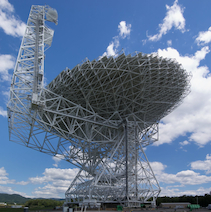According to theory, matter and antimatter have exactly the same properties, except for the opposite electrical charge. Researchers have now calculated the antiproton mass relative to the electron with unprecedented precision: it weighs exactly the same as its matter counterpart, the proton.
The laws of nature are assumed to obey a fundamental symmetry, known as CPT-symmetry (Charge conjugation, Parity and Time reversal). This symmetry implies that a mirror-image of our Universe, where left and right are inverted (parity inversion), all momenta are reversed (time inversion) and all matter is replaced by antimatter (charge inversion), would evolve under the same physical laws as ours. If any deviation was to be observed, this fundamental symmetry would be broken.
Because matter and antimatter annihilate with each other when they come into contact, converting into energy and new particles, it is extremely difficult to handle antimatter in the laboratory. Back in 1997, an international collaboration developed a facility called the Antiproton Decelerator at CERN: antiprotons are produced in high-energy collisions and collected in a vacuum pipe. They are then slowed down and transported to several experiments. One of these experiments, ASACUSA1 (Atomic Spectroscopy and Collisions using Slow Antiprotons), sends the antiprotons into a helium target to create and study antiprotonic helium atoms.
The nucleus of a helium atom is orbited by two electrons; in antiprotonic helium, one of these electrons is replaced by an antiproton in an excited state. By firing a laser beam onto the atom, scientists are able to tune the antiproton frequency until it makes a quantum jump from one orbit to another. This frequency can be compared with theoretical calculations, allowing to determine the mass of the antiproton relative to the electron.
Unfortunately, measurements are imprecise because of the Doppler effect: depending on their thermal energy, the antiprotonic atoms will jiggle around randomly. Some of them will move towards the laser beam, while others move away, resulting in different frequencies.
To improve the precision of their measurements, Dr . Masaki Hori and colleagues used a technique called “two-photon laser spectroscopy”. Thanks to a second laser beam, the scientists are able to partially cancel the effect previously described: the first laser is used to bring the antiproton to a virtual energy level not allowed by quantum mechanics, and the second one then brings the antiproton to the closest allowed state. This results in measurements four to six times more precise.
This new experiment showed that the antiproton is 1836.1526736(23) times heavier than the electron, which is exactly the mass of the proton with a similar precision (the parenthetical error represents one standard deviation). While this measurement seems to confirm the CPT theorem, the researchers also observed that antiprotons obey the same laws of nonlinear quantum optics as normal particles.
If a violation of CPT symmetry was ever to be observed, this would require a complete rethink of our understanding of nature. Ironically, a mystery remains unsolved: according to modern cosmology, matter and antimatter were created in equal amounts at the beginning of the Universe – which today seems to be made entirely out of matter. As half the Universe has apparently gone missing, it looks like we will have to reconsider our understanding of the Universe, anyway…
Reference
Masaki Hori, Anna Sótér, Daniel Barna, Andreas Dax, Ryugo Hayano, Susanne Friedreich, Bertalan Juhász, Thomas Pask, Eberhard Widmann, Dezsö Horváth, Luca Venturelli, Nicola Zurlo. Two-photon laser spectroscopy of antiprotonic helium and the antiproton to electron mass ratio. Nature, 28 July 2011




